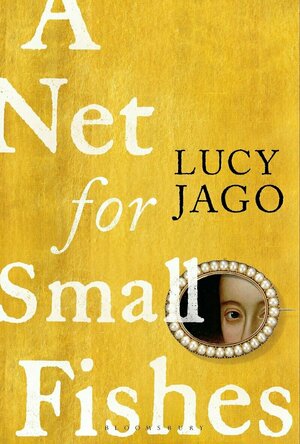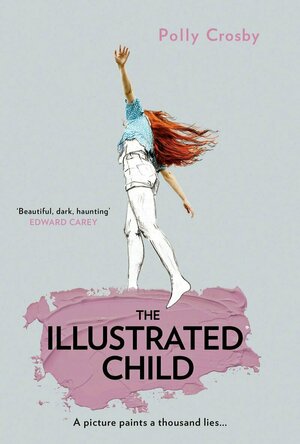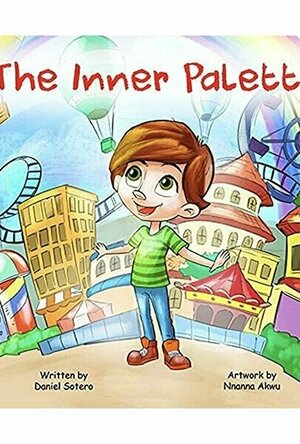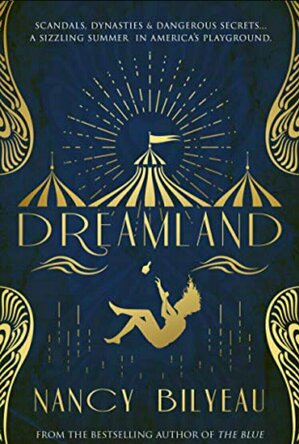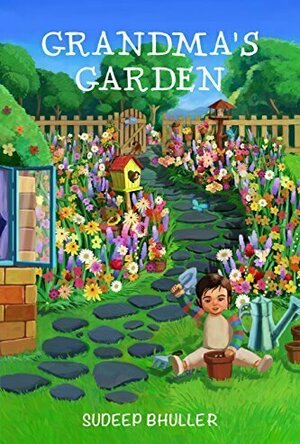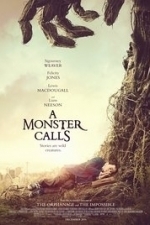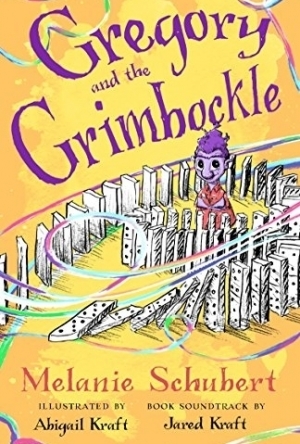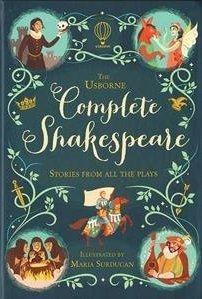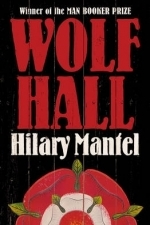Search
Search results
ClareR (5885 KP) rated A Net for Small Fishes in Books
Feb 17, 2021
I could end this review quickly and just say “I loved this book”, because I did. I loved it. I love well written, historical fiction with a foot firmly set in reality, and A Net for Small Fishes certainly fulfils that requirement for me. The attention to detail shows just how much research must have gone in to this - even down to the fastenings on the dresses, the makeup the women wore and the ‘simples’ they made up to ease ailments.
This is a story that I already knew a little about: I read The Poison Bed by E. C. Fremantle on The Pigeonhole about 3 years ago, where the story was told from Frances Howards point of view, and A Net for Small Fishes does nothing to contradict that story. They both illustrate really well how women were expected to conform and be perfect, docile, brood mares for their influential husbands, and in Frankie’s case, how political marriages weren’t always happy ones. It also illustrated how desperation to escape a loveless marriage made two women take desperate action. As so often happens throughout history, the women in this story are punished for the barefaced cheek they had to want better lives for themselves. It’s a frustrating conclusion - but I could see that it was inevitable. It showed that it didn’t matter if you were a woman in one of the most influential families in the country or a doctors widow, you toed the line or suffered the consequences. But what a journey they had!
This is such a good story, as real life often is, and it’s a book that’s going on the Keeper shelf (yes, I bought a copy after I read it on The Pigeonhole - that’s how much I liked it).
Many thanks to The Pigeonhole for serialising this, and to Lucy Jago for contributing to the conversation.
This is a story that I already knew a little about: I read The Poison Bed by E. C. Fremantle on The Pigeonhole about 3 years ago, where the story was told from Frances Howards point of view, and A Net for Small Fishes does nothing to contradict that story. They both illustrate really well how women were expected to conform and be perfect, docile, brood mares for their influential husbands, and in Frankie’s case, how political marriages weren’t always happy ones. It also illustrated how desperation to escape a loveless marriage made two women take desperate action. As so often happens throughout history, the women in this story are punished for the barefaced cheek they had to want better lives for themselves. It’s a frustrating conclusion - but I could see that it was inevitable. It showed that it didn’t matter if you were a woman in one of the most influential families in the country or a doctors widow, you toed the line or suffered the consequences. But what a journey they had!
This is such a good story, as real life often is, and it’s a book that’s going on the Keeper shelf (yes, I bought a copy after I read it on The Pigeonhole - that’s how much I liked it).
Many thanks to The Pigeonhole for serialising this, and to Lucy Jago for contributing to the conversation.
ClareR (5885 KP) rated The Illustrated Child in Books
Oct 26, 2020
Romilly and her father Tobias move in to a run-down house in the countryside when she is 9 years old. Her father is an eccentric artist, and she doesn’t know anything about her mother. Later, Monty the cat joins Romilly and her friend Stacey on adventures in the local countryside, in what seems to be an idyllic childhood.
Tobias creates a series of beautifully illustrated books starring both Romilly and Monty, and their lives are changed. They find fame, as readers believe that the books are a kind of treasure hunt - which, incidentally, reminded me of the Kit Williams book, Masquerade, published in the late 1970’s. Strangers start to camp out in their garden, digging holes all over their land to find the treasure - meaning that Romilly is unable to leave the house.
Life changes again when Tobias’ behaviour becomes more and more erratic, Romilly’s mother comes back in to her life, and she meets her grandmother. Things seem to be continuously changing, and nothing is consistent - there’s no stability in Romilly’s life.
This book was not at all what I expected. It started out as something of an idyllic childhood, but as time went on, Romilly’s life is irrevocably changed. I felt so much sadness for her, and there were times when I was almost in tears (you might need a hanky!). This deals with some pretty serious themes: dementia, mental illness, death and child abuse. All the way through I was rooting for Romilly and hoping that she would get the help that she needed and deserved. This is such a beautifully written book, and I would have no hesitation in recommending it.
Many thanks to the publisher and NetGalley for my e-ARC.
Tobias creates a series of beautifully illustrated books starring both Romilly and Monty, and their lives are changed. They find fame, as readers believe that the books are a kind of treasure hunt - which, incidentally, reminded me of the Kit Williams book, Masquerade, published in the late 1970’s. Strangers start to camp out in their garden, digging holes all over their land to find the treasure - meaning that Romilly is unable to leave the house.
Life changes again when Tobias’ behaviour becomes more and more erratic, Romilly’s mother comes back in to her life, and she meets her grandmother. Things seem to be continuously changing, and nothing is consistent - there’s no stability in Romilly’s life.
This book was not at all what I expected. It started out as something of an idyllic childhood, but as time went on, Romilly’s life is irrevocably changed. I felt so much sadness for her, and there were times when I was almost in tears (you might need a hanky!). This deals with some pretty serious themes: dementia, mental illness, death and child abuse. All the way through I was rooting for Romilly and hoping that she would get the help that she needed and deserved. This is such a beautifully written book, and I would have no hesitation in recommending it.
Many thanks to the publisher and NetGalley for my e-ARC.
BookishWoo (317 KP) rated The Inner Palette in Books
May 30, 2020
Careful and considered approach to aid in children’s mental health
We are constantly being told that mental health is a common occurrence for school age children and worryingly this is becoming an increasing issue for those at Primary age.
When Daniel approached me and asked if I would review his book, I was all ready to say no, not because I wasn’t interested, but more because I would not usually review books for Primary ages as my children are now adults and thankfully haven’t made me a grandmother yet! I am really not ready to be called Grandma, Nan or Nanna!
However, out of consideration to Daniel, I took a look at the synopsis and realised that the subject matter of his book resonated with me as one of my children has had and continues to have mental health issues of varying degrees although thankfully not to a detrimental effect.
This was honestly a beautiful little story and an equally beautifully illustrated book. Daniel takes a very careful and considered approach to explaining to children how to cope when our minds are drowned out by bad thoughts and feelings.
One could argue that this same approach could be used in equal measures for adults too, as lets face it we all struggle mentally at some point.
My only criticism is that I thought there were some lengthy words for the very young but that is counterbalanced by the illustrations and it is a book that you would read together as a family to aid in opening honest discussions so if necessary, a parent, guardian or carer could use easier words in place of, to avoid having to explain the meaning.
I would definitely recommend this to anyone with children, grandchildren, nieces or nephews and to anyone who works with children.
When Daniel approached me and asked if I would review his book, I was all ready to say no, not because I wasn’t interested, but more because I would not usually review books for Primary ages as my children are now adults and thankfully haven’t made me a grandmother yet! I am really not ready to be called Grandma, Nan or Nanna!
However, out of consideration to Daniel, I took a look at the synopsis and realised that the subject matter of his book resonated with me as one of my children has had and continues to have mental health issues of varying degrees although thankfully not to a detrimental effect.
This was honestly a beautiful little story and an equally beautifully illustrated book. Daniel takes a very careful and considered approach to explaining to children how to cope when our minds are drowned out by bad thoughts and feelings.
One could argue that this same approach could be used in equal measures for adults too, as lets face it we all struggle mentally at some point.
My only criticism is that I thought there were some lengthy words for the very young but that is counterbalanced by the illustrations and it is a book that you would read together as a family to aid in opening honest discussions so if necessary, a parent, guardian or carer could use easier words in place of, to avoid having to explain the meaning.
I would definitely recommend this to anyone with children, grandchildren, nieces or nephews and to anyone who works with children.
Dreamland is set in 1911, the year of a heatwave in New York. Peggy Batternberg, a wealthy heiress, is forced to spend the summer at the exclusive Oriental Hotel on Coney Island. She would rather work at the Moonrise Bookstore and keep her distance from her controlling family. Even though she’s not allowed to go to the fairgrounds on Coney Island on her own, she does go there with her brother and male cousins. After an argument, they become separated, and Peggy is able to explore Dreamland (the fairground) alone. She meets a poor artist, Stefan, and falls in love with him and his art.
But when dead women start turning up and Stefan is under suspicion, Peggy realises that the culprit may be closer than she realises (and not Stefan!). She decides that she has to be the one to find out who has murdered these women. In doing so, she discovers the dark side of her family.
I really enjoyed this - the descriptions were so good, and really illustrated the vast difference between the exclusive, luxurious hotels and the fairgrounds, the wealth of Peggy’s family and the poverty of the fairground workers.
Henry Taul, Peggy’s sisters fiancé and her ex-boyfriend, really is an unpleasant piece of work, and his mother is awful - a great example of ‘new money’ and how they clearly don’t know how to conduct themselves (ok, I’m saying this with a little ‘tongue in cheek’). Unlike the more staid (on the surface) Batternbergs!
The descriptions of Coney Island so evocative, that I could have been there, and the photos that the author had taken and posted on The Pigeonhole really added to this.
I must have changed my mind about the identity of the murderer at least half a dozen times , and it really did take me until the end and the big reveal to be sure!
A thoroughly enjoyable serialisation by The Pigeonhole, made even better by the authors participation.
But when dead women start turning up and Stefan is under suspicion, Peggy realises that the culprit may be closer than she realises (and not Stefan!). She decides that she has to be the one to find out who has murdered these women. In doing so, she discovers the dark side of her family.
I really enjoyed this - the descriptions were so good, and really illustrated the vast difference between the exclusive, luxurious hotels and the fairgrounds, the wealth of Peggy’s family and the poverty of the fairground workers.
Henry Taul, Peggy’s sisters fiancé and her ex-boyfriend, really is an unpleasant piece of work, and his mother is awful - a great example of ‘new money’ and how they clearly don’t know how to conduct themselves (ok, I’m saying this with a little ‘tongue in cheek’). Unlike the more staid (on the surface) Batternbergs!
The descriptions of Coney Island so evocative, that I could have been there, and the photos that the author had taken and posted on The Pigeonhole really added to this.
I must have changed my mind about the identity of the murderer at least half a dozen times , and it really did take me until the end and the big reveal to be sure!
A thoroughly enjoyable serialisation by The Pigeonhole, made even better by the authors participation.
Night Reader Reviews (683 KP) rated Grandma's Garden in Books
Jan 9, 2020
Grandmas Garden by Sudeep Bhuller is a very cute book and I could see it being given as a gift to a grandma who likes reading to her grandchildren. The book states that it is a great visual treat for babies discovering shapes and colors. While it is very colorful the images have soft edges and the shapes are not very well defined.
In this book, children are walked through Grandmas Garden. The bright flowers and fruit trees are pointed out early on. Everything from cats and birds to tiny snails and millipedes are shown. Children also get to see ladybugs, bees, and even butterflies that may be harder to see up close in nature.
I really liked how bright and colorful the book is. It offers many opportunities for parents to have children point out what is being talked about on each page. Reading this book offers opportunities to find the cat or snail and count the ants or birds. Reading this right before taking a child out to plant a seed might be a fun activity. What I didnt like was that at times while reading it out loud it felt as if there should be rhymes when none were present. The flow of the book is disrupted if you try to read it as a story. If you read each page as an individual and not part of a whole it is not as bad.
For target readers for this book, the author was correct in saying that infants and toddlers will enjoy having this book read to them. I know my two years old seemed to enjoy it. I rate this book 3 out of 4. While the book is beautifully illustrated and walks children thought the things they may find in a garden, I can not give it a perfect score. The problem with how the book doesn't flow very well did cause it to lose points with me.
https://nightreaderreviews.blogspot.com/
https://www.austinmacauley.com/book/grandmas-garden
In this book, children are walked through Grandmas Garden. The bright flowers and fruit trees are pointed out early on. Everything from cats and birds to tiny snails and millipedes are shown. Children also get to see ladybugs, bees, and even butterflies that may be harder to see up close in nature.
I really liked how bright and colorful the book is. It offers many opportunities for parents to have children point out what is being talked about on each page. Reading this book offers opportunities to find the cat or snail and count the ants or birds. Reading this right before taking a child out to plant a seed might be a fun activity. What I didnt like was that at times while reading it out loud it felt as if there should be rhymes when none were present. The flow of the book is disrupted if you try to read it as a story. If you read each page as an individual and not part of a whole it is not as bad.
For target readers for this book, the author was correct in saying that infants and toddlers will enjoy having this book read to them. I know my two years old seemed to enjoy it. I rate this book 3 out of 4. While the book is beautifully illustrated and walks children thought the things they may find in a garden, I can not give it a perfect score. The problem with how the book doesn't flow very well did cause it to lose points with me.
https://nightreaderreviews.blogspot.com/
https://www.austinmacauley.com/book/grandmas-garden
Lee (2222 KP) rated A Monster Calls (2016) in Movies
Jul 26, 2017
A Monster Calls is based on an idea by writer and activist Siobhan Dowd, who sadly died from cancer in 2007 before she could develop her story to print. Her ideas were developed into a book by Patrick Ness in 2011 and illustrated by Jim Kay where it went on to receive a number of childrens literary awards.
The story is set in a very dreary looking England and features a boy called Conor struggling to cope with his mother’s terminal cancer. His father is divorced from his mother and is living in the States with his new family. He’s bullied at school and he’s troubled by nightmares. And then he starts being visited at night by a monster who tells him 3 stories. It’s a bleak tale about the harshness of life, and I was kind of worried about how my 11 year old daughter might take to it when she said she wanted to see it with me.
J.A.Bayona, director of The Orphanage, handles the subject matter well, showing us how a child’s fantasy can make sense of the world and their feelings. The stories told by the monster occur over a number of days and are beautifully depicted in watercolour animation. Each one providing its own lesson to be learned in life. Liam Neeson is the monster, the large yew tree that Conor can see from his bedroom window, giving his best Aslan voice. Felicity Jones is the mother, gradually dying as each cancer drug fails. Sigourney Weaver is the grandmother who Conor reluctantly goes to stay with while his mother is receiving treatment.
The monster itself, the great yew tree, is a real triumph. Beautifully rendered and realistically interacting with its surroundings. When you consider the films meagre budget of 43 million dollars, it’s breathtaking what they’ve managed to achieve.
As expected, the movie really packs a punch with barely any humour or lightheartedness. There are times it’s a little too slow and gloomy, but it’s hard hitting thought provoking and intense. I don’t mind admitting that both me and my daughter found ourselves in tears towards the end too. Along with most of the cinema!
The story is set in a very dreary looking England and features a boy called Conor struggling to cope with his mother’s terminal cancer. His father is divorced from his mother and is living in the States with his new family. He’s bullied at school and he’s troubled by nightmares. And then he starts being visited at night by a monster who tells him 3 stories. It’s a bleak tale about the harshness of life, and I was kind of worried about how my 11 year old daughter might take to it when she said she wanted to see it with me.
J.A.Bayona, director of The Orphanage, handles the subject matter well, showing us how a child’s fantasy can make sense of the world and their feelings. The stories told by the monster occur over a number of days and are beautifully depicted in watercolour animation. Each one providing its own lesson to be learned in life. Liam Neeson is the monster, the large yew tree that Conor can see from his bedroom window, giving his best Aslan voice. Felicity Jones is the mother, gradually dying as each cancer drug fails. Sigourney Weaver is the grandmother who Conor reluctantly goes to stay with while his mother is receiving treatment.
The monster itself, the great yew tree, is a real triumph. Beautifully rendered and realistically interacting with its surroundings. When you consider the films meagre budget of 43 million dollars, it’s breathtaking what they’ve managed to achieve.
As expected, the movie really packs a punch with barely any humour or lightheartedness. There are times it’s a little too slow and gloomy, but it’s hard hitting thought provoking and intense. I don’t mind admitting that both me and my daughter found ourselves in tears towards the end too. Along with most of the cinema!
Rachel King (13 KP) rated Economic Meltdown: A Family Preparedness Plan for Disaster in Books
Feb 11, 2019
The purpose of this book is quickly understood to motivate and aid the reader to prepare for a "man-made disaster" of the magnitude that is illustrated through a fictional story that the author, Karen McHale, apparently believes is impending for the U.S.A. I won't address whether or not I believe such a disaster is imminent or not. The story takes up the first 132 pages of the book, and the remaining pages is a quick guide to self-sufficiency, with a step-by-step guide and divided by Pantry and Utilities.
What I will address is the text of the book itself, which, frankly, could use some work. I can be a stickler for grammar, and it is obvious to me that the author used the spelling and grammar check function that is found in your typical text-formatting program, such as Word. Simply having someone read over the book before publication could catch these errors. For example, starting on page 50, the word "panty" has replaced what should have been "pantry," not every time, but often enough to be obvious. Other things showed up in the text to show the author's weakness in writing fiction, such as this: "...the unspoken thought hung unspoken in the air..." (pg. 11).
The story itself is a thinly veiled attempt at teaching the reader what is already listed in the section at the end of the book. Much more of the book is devoted to detailed descriptions of these preparations than to the development of the different characters. Towards the end of the book, time speeds up as the author skips ahead several times to fast forward the plot to 2012, with snapshots of plot to show the progress of the fictional family in its preparations for the economic disaster.
Honestly, this book would have been much better written had the author spent more time developing the different characters and made them unique and interesting to the reader, as well as gotten a few extra people to read the text before publication. McHale does not even bother with last names for this "typical American household." Sadly, except for the eight page guide at the end, it is all very forgettable.
What I will address is the text of the book itself, which, frankly, could use some work. I can be a stickler for grammar, and it is obvious to me that the author used the spelling and grammar check function that is found in your typical text-formatting program, such as Word. Simply having someone read over the book before publication could catch these errors. For example, starting on page 50, the word "panty" has replaced what should have been "pantry," not every time, but often enough to be obvious. Other things showed up in the text to show the author's weakness in writing fiction, such as this: "...the unspoken thought hung unspoken in the air..." (pg. 11).
The story itself is a thinly veiled attempt at teaching the reader what is already listed in the section at the end of the book. Much more of the book is devoted to detailed descriptions of these preparations than to the development of the different characters. Towards the end of the book, time speeds up as the author skips ahead several times to fast forward the plot to 2012, with snapshots of plot to show the progress of the fictional family in its preparations for the economic disaster.
Honestly, this book would have been much better written had the author spent more time developing the different characters and made them unique and interesting to the reader, as well as gotten a few extra people to read the text before publication. McHale does not even bother with last names for this "typical American household." Sadly, except for the eight page guide at the end, it is all very forgettable.
Lilyn G - Sci-Fi & Scary (91 KP) rated Gregory and the Grimbockle in Books
Feb 11, 2018
Such a fun, imaginative read!
Gregory and the Grimbockle was one of the funniest and cute books that I’ve read with my child in a long time. It was so imaginative and fantastical. We loved the adorable illustrations, but were very glad that the Grimbockle was never illustrated going into or out of his temporary home. The sheer grossness of how that happened was so at odds with the cuteness of everything else, but it worked really well together strangely.
Melanie Schubert has enormous talent that Abigail Kraft complemented perfectly. This story of a boy who doesn’t quite fit in, who is teased and sometimes bullied, and is from a home that is neither loving nor abusive will resonate with a lot of younger readers, I believe. His situation isn’t one of extremes and as a result he’s more easy to relate to. The adventures that he goes on with the Grimbockle are pure fiction, but the truth he learns along the way about the large impact that small gestures can have means is not. As a parent, that truth – that our actions have much more an impact that we might think – is one that I enjoyed having a chance to talk about with my child through the lens of Gregory and the Grimbockle.
The only thing we didn’t like about Gregory and the Grimbockle was the way it ended. It just felt like it ended too abruptly. The transition from childhood to “okay, he’s growing up now” happened so quickly that we had to re-read to make sure we hadn’t accidentally missed a few pages. While I can see why the author did it the way she did, by the time closed the book, we were both already mourning the exiting of the Bockles from our world.
Gregory and the Grimbockle is a book that any parent should delight in picking up to read with their children. It’s an easy read, a short one, and it helps reinforce an important lesson. You’ll be missing out if you don’t give it a try.
This review appeared first at Sci-Fi & Scary.
Melanie Schubert has enormous talent that Abigail Kraft complemented perfectly. This story of a boy who doesn’t quite fit in, who is teased and sometimes bullied, and is from a home that is neither loving nor abusive will resonate with a lot of younger readers, I believe. His situation isn’t one of extremes and as a result he’s more easy to relate to. The adventures that he goes on with the Grimbockle are pure fiction, but the truth he learns along the way about the large impact that small gestures can have means is not. As a parent, that truth – that our actions have much more an impact that we might think – is one that I enjoyed having a chance to talk about with my child through the lens of Gregory and the Grimbockle.
The only thing we didn’t like about Gregory and the Grimbockle was the way it ended. It just felt like it ended too abruptly. The transition from childhood to “okay, he’s growing up now” happened so quickly that we had to re-read to make sure we hadn’t accidentally missed a few pages. While I can see why the author did it the way she did, by the time closed the book, we were both already mourning the exiting of the Bockles from our world.
Gregory and the Grimbockle is a book that any parent should delight in picking up to read with their children. It’s an easy read, a short one, and it helps reinforce an important lesson. You’ll be missing out if you don’t give it a try.
This review appeared first at Sci-Fi & Scary.
ZebraLily (5 KP) rated The Usborne Complete Shakespeare: Stories from all the plays in Books
Mar 21, 2018
MY FAVORITE USBORNE BOOK!
This book is absolutely breathtaking! In most schools, children are not introduced to Shakespeare until at least late middle, if not high-school, and by then, it’s in his original language. By providing children, and adults even, with a book such as this, in a readable language relavent to today, we are able to fully enjoy Shakespeare’s stories in a way that we can comprehend before diving into his original works. By providing books such as these, our children will better appreciate his work when they approach it in school in later years because they will already be familiar with his plays. Each play is labeled as a comedy, tragedy, or historical play, and then provided with a one-page synopsis of the play, along with beautiful illustrations of the characters and how they relate to the other characters. Then you’ll dive into 7-8 pages of text that are written in plain-English that relay the story! This is brilliant! There are a handful of his lesser-popular works that are provided in a simple one-page summary with illustrated characters, but they are still included, as well as a brief section of Williams Shakespeare’s life. This book is also hard bound with extra padding to protect the cover, and a ribbon bookmark to save your place. It will definitely be a treasured book in your family’s library for years to come! My 6yo daughter has absolutely fallen in love with is works because of this...and I must say.....she’s SIX and already knows Shakespeare!!!! All thanks to Usborne Books and More! This is why I do what I do! You can find this book on my website at: https://k6798.myubam.com for only $24.99 and it’s well worth it! Happy reading!
Rich, detailed, but strange narrative style at times!
I was sooo keen to read this - especially after watching the TV series, which I completely loved. For the most part, I wasn't disappointed. It's such a novel way of exploring Henry VIII's relationship with Anne Boleyn, not to mention the complex divorce proceedings that preceded it - through the eyes of Thomas Cromwell, the man partially responsible for orchestrating the whole thing.
Immediately, I was struck by Hilary Mantel's remarkable ability to capture life of that time - making it seem strangely familiar, despite the fact it was hundreds of years ago. She made it all seem so real, largely due to her richness of detail, not to mention expert knowledge of the era. The little notes of humour throughout are what really bring it to life - so often, history is treated with utmost seriousness, yet Mantel is absolutely correct - I'm sure people were cracking jokes and saying silly things in the Tudor era too!
The relationships were likewise beautifully illustrated, and the death of Cromwell's wife, genuinely moving. For me, this was one of the most impressive moments of the book, as Mantel captures grief so powerfully and yet so simply.
One thing I did find strange though - the way Mantel uses pronouns throughout the book. I pondered for ages about why it jarred on me every so often, and I think it's because the 3rd person narrative is so intimate, it almost feels like a 1st person in places. Then, when she uses 'he' again, rather than 'I', it is momentarily confusing. I found myself wondering what the book would have been like had she just told it in first person through Cromwell's eyes - my personal belief is that it might have worked better.
Also, although the richness of the detail was spectacular, there were times when I felt that it held up the narrative slightly. I appreciate her desire to capture every moment of these tumultuous historic events, but at times, I did find them a wee bit boring.
However, for the most part, I was really into this book, and loved the character of Cromwell to bits. A man from a humble background, unfailingly pragmatic and clever - fabulous stuff!
Immediately, I was struck by Hilary Mantel's remarkable ability to capture life of that time - making it seem strangely familiar, despite the fact it was hundreds of years ago. She made it all seem so real, largely due to her richness of detail, not to mention expert knowledge of the era. The little notes of humour throughout are what really bring it to life - so often, history is treated with utmost seriousness, yet Mantel is absolutely correct - I'm sure people were cracking jokes and saying silly things in the Tudor era too!
The relationships were likewise beautifully illustrated, and the death of Cromwell's wife, genuinely moving. For me, this was one of the most impressive moments of the book, as Mantel captures grief so powerfully and yet so simply.
One thing I did find strange though - the way Mantel uses pronouns throughout the book. I pondered for ages about why it jarred on me every so often, and I think it's because the 3rd person narrative is so intimate, it almost feels like a 1st person in places. Then, when she uses 'he' again, rather than 'I', it is momentarily confusing. I found myself wondering what the book would have been like had she just told it in first person through Cromwell's eyes - my personal belief is that it might have worked better.
Also, although the richness of the detail was spectacular, there were times when I felt that it held up the narrative slightly. I appreciate her desire to capture every moment of these tumultuous historic events, but at times, I did find them a wee bit boring.
However, for the most part, I was really into this book, and loved the character of Cromwell to bits. A man from a humble background, unfailingly pragmatic and clever - fabulous stuff!
